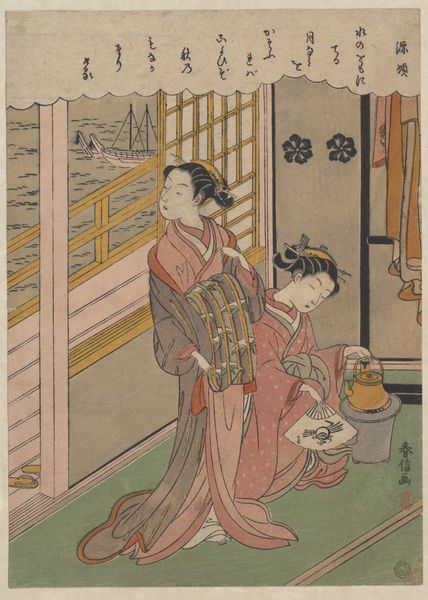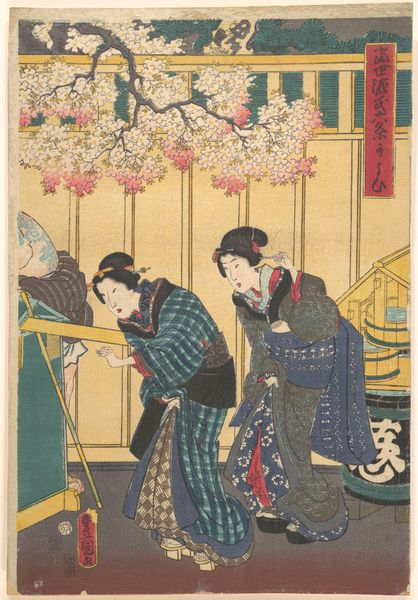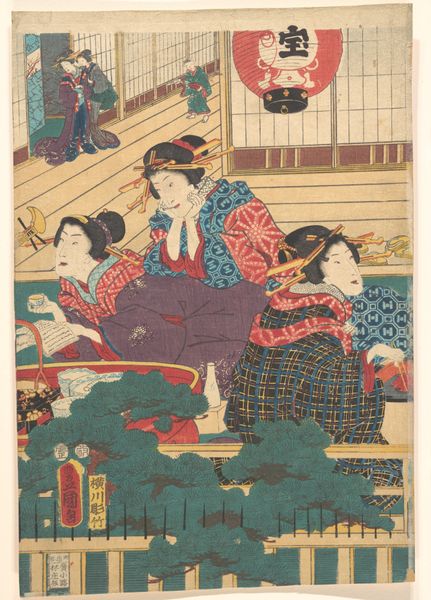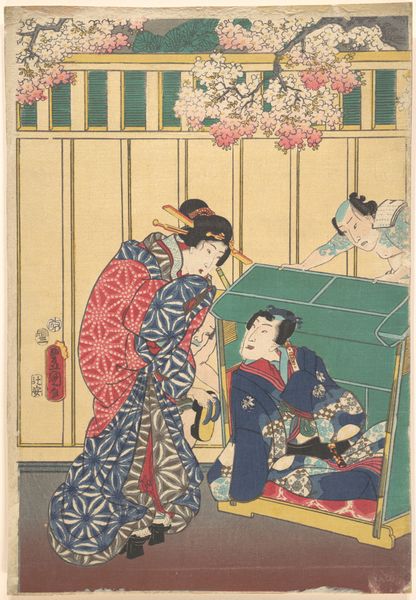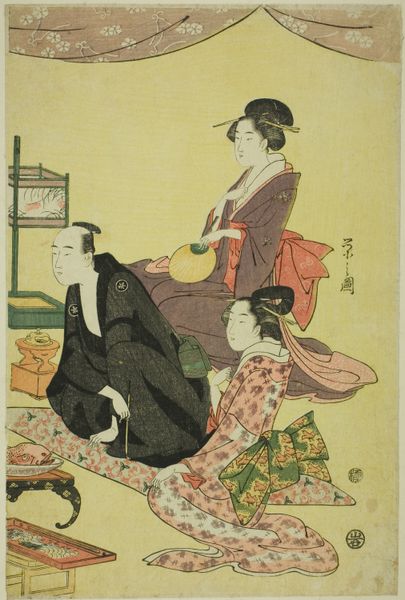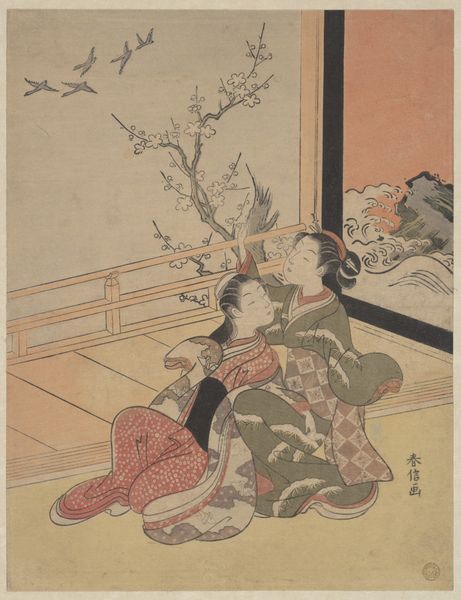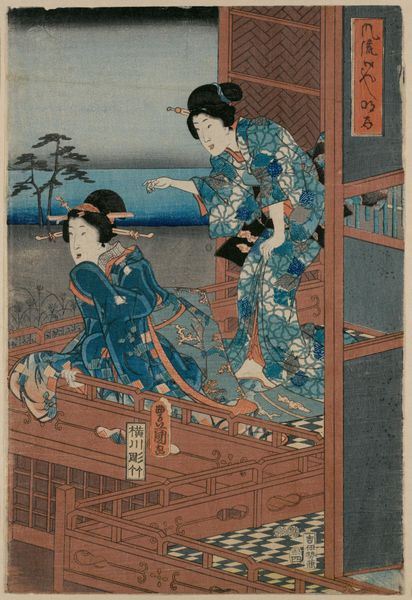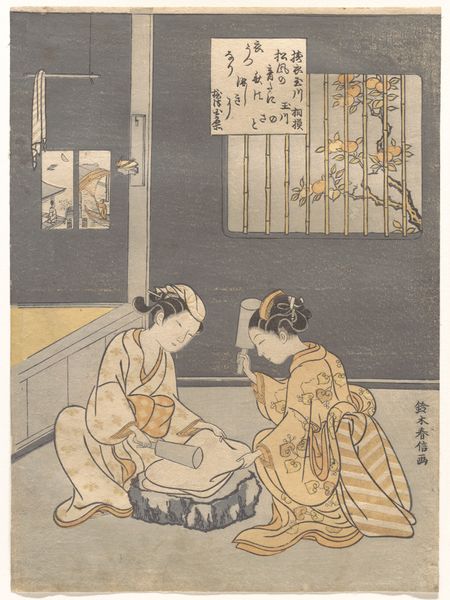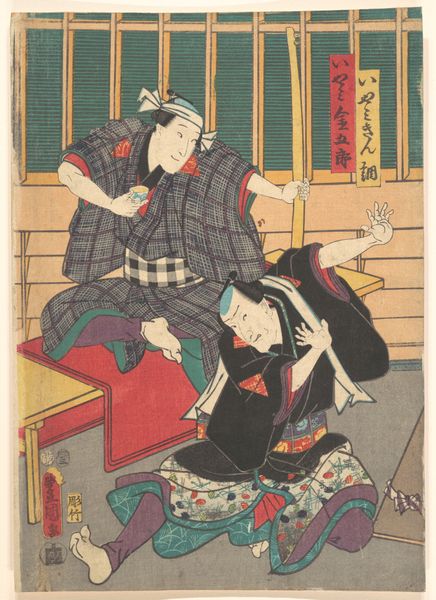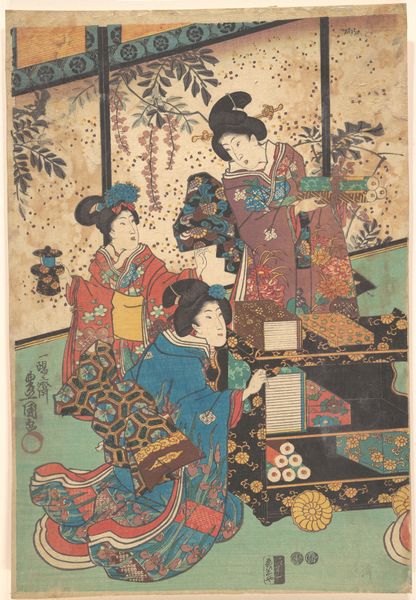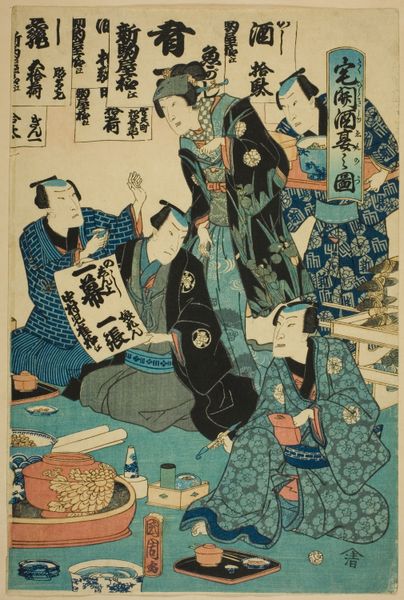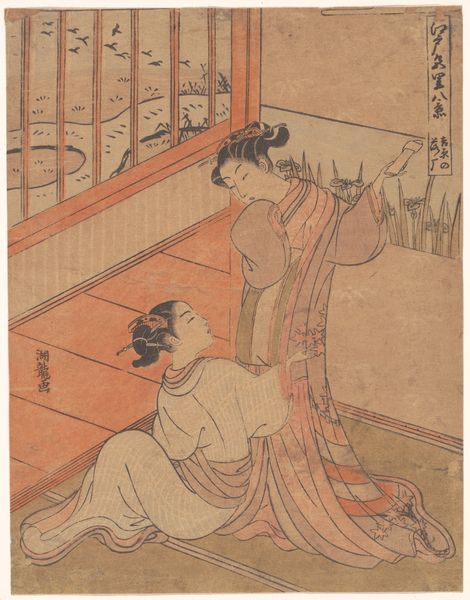
print, woodblock-print
#
narrative-art
# print
#
asian-art
#
ukiyo-e
#
woodblock-print
#
genre-painting
Dimensions: height 361 mm, width 249 mm
Copyright: Rijks Museum: Open Domain
Curator: Look at this beautiful woodblock print by Utagawa Kunisada, titled "Vrouwen maken prenten (rechterdeel)" which translates to "Women making prints (right part)," likely created between 1796 and 1865. It's part of the Rijksmuseum's collection. Editor: The cool blues of the room immediately create a sense of calm and industry. The women seem deeply engaged, creating their own worlds within the larger one. Curator: Exactly. Note the stacks of paper, the tools of the trade so carefully placed—the carving tools on the low table where one woman sketches the composition, the other seated on the floor with a block she is preparing. This is labor. Their work facilitated art creation and production in 19th-century Japan. Woodblock prints were a crucial medium for mass communication. Editor: I’m fascinated by what this image reveals about labor. These women are integral to the ukiyo-e tradition but historically invisible. Depicting their processes centers women’s contributions and disrupts assumptions about gender roles in the production of art and information. How revolutionary for its time to show them at work. Curator: The woodblock process itself democratized art production. Rather than solely celebrating the artistic genius, we acknowledge the artisans who materially manifest it. Each precise cut, each careful impression, connects these women directly to the consumer market of Edo-period Japan. Their skills determined the circulation and success of many of these prints. Editor: Yes, by turning our attention to the creation process, it becomes clear that their skill transforms art from a rarefied object into a common and essential good. Even the composition, so carefully arranged, echoes the balance needed for the socio-economic function within the ukiyo-e world. We get to consider their vital intersectionality within a commercial process, and they cease to be just background labor and become something more critical. Curator: It provides such needed nuance! Recognizing them means we question so much larger art-world operations. Editor: Right! We consider a holistic and accurate portrayal.
Comments
No comments
Be the first to comment and join the conversation on the ultimate creative platform.
